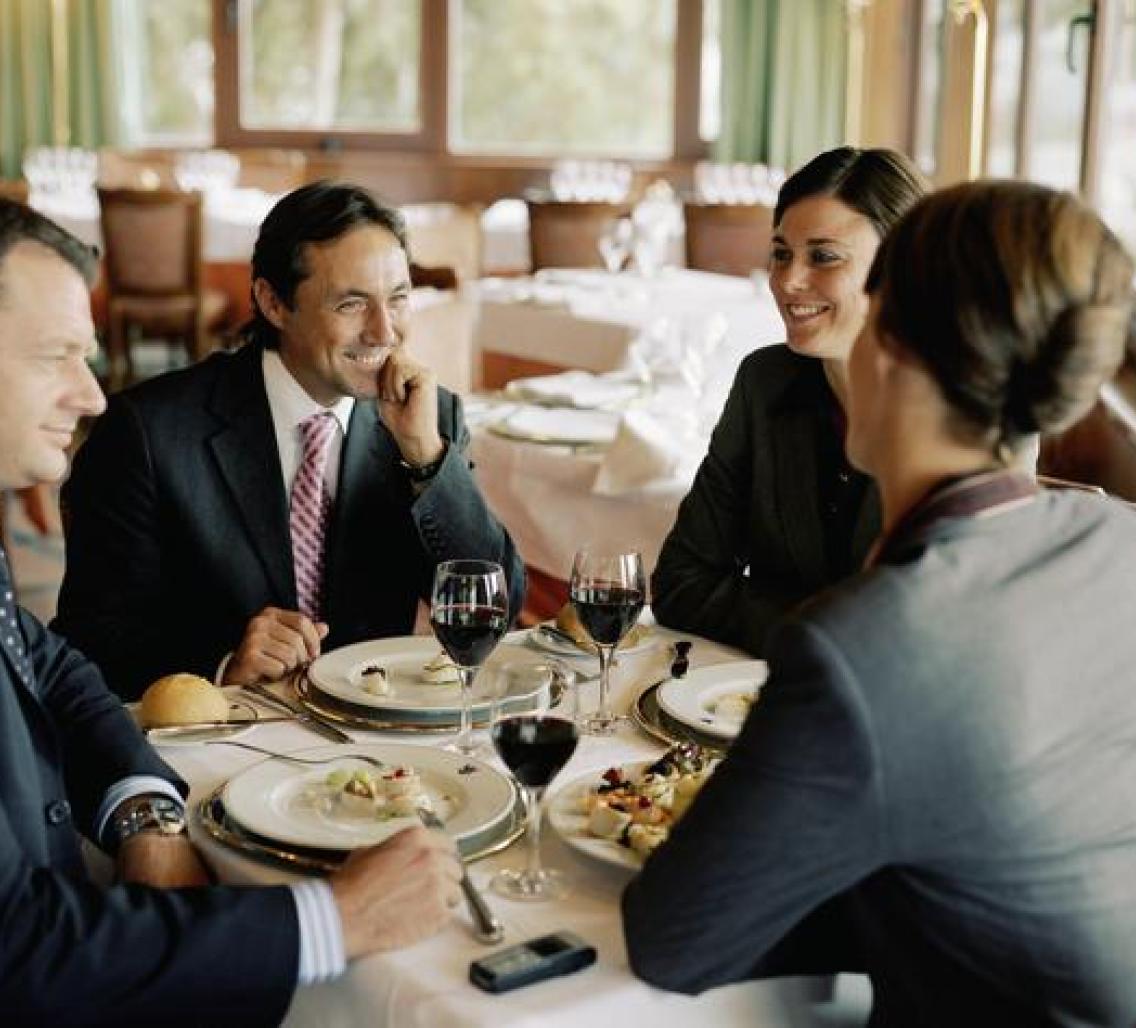By Amy Adams
Sometimes big discoveries start with small conversations.
That was the idea at least when Stanford’s Bio-X program placed scientists from different backgrounds in adjoining labs of the Clark Center. Ten years later, that’s a proven success. Scientists bumped into each other and shared coffee, and now interdisciplinary projects are flourishing.
"What I found interesting was how much big ideas grew when people from across disciplines – many meeting for the first time that evening – started dreaming together."
Our most recently formed interdisciplinary institutes, the Stanford Neurosciences Institute and the Institute for Chemical Biology, don’t yet have their own building and can’t spark conversation by proximity. Instead, they’re taking a time-honored approach to bringing people together: food.
I got to attend one of these conversation starters at a dinner held by William Newsome, PhD, professor of neurobiology and director of the newly formed Neurosciences Institute.
Newsome asked the attending crowd of biologists, engineers, radiologists, neurobiologists and bioengineers to dream big about what they’d want to achieve if money were no object and they could collaborate with anyone on campus.
What ensued was an hour-long discussion about decision-making networks, a new generation of brain-inspired computing, devices to stimulate miniscule brain regions, and ever more complex ways of peering into and understanding the brain.
What I found interesting was how much those big ideas grew when people from across disciplines – many meeting for the first time that evening – started dreaming together.
Brian Rutt, PhD, professor of radiology, saw his original idea for improved brain imaging take on new life when engineers and neurobiologists jumped in with their own thoughts about how those techniques could be employed in human diseases. Rutt told Newsome that getting scientists to talk across disciplines is going to be critical for generating the kinds of projects that are critical for the Institute’s success. “I think one of your challenges is to find a way of getting your members to both speak the same language and also appreciate each other’s science,” he said.
These dinners are an initial way Newsome is addressing the challenge of bringing his members together, an idea he got from chemistry professor Chaitan Khosla, PhD, who directs the Institute for Chemical Biology. Newsome said, “I heard such great things from faculty about Chaitan’s dinners that I thought I had to do this for the Neuroscience Institute.”
Khosla’s dinner series generated collaborations that went on to get early stage funding from the Institute for Chemical Biology.
Newsome hopes his own dinners will lead to entries for his first round of funding, called the Big Ideas projects. Letters of intent are due March 14, with full proposals for selected projects due June 27. Winning proposals will become prioritized initiatives for the Stanford Neurosciences Institute. Given the conversations I heard, I’ll be interested to see the kinds of big ideas the diverse scientists dream up.
